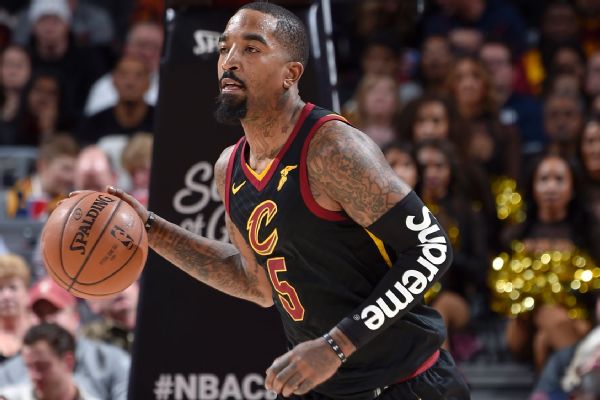The NBA has notified Cleveland Cavaliers guard J.R. Smith that he could face a fine for each game he fails to cover-up a new tattoo on his right leg. In August, Smith debuted a new tattoo on the back of his right leg displaying the company logo of Supreme, an American clothing brand. Smith has taken to Instagram to complain about the NBA’s warning. However, as explained below, the NBA not only has the right to fine Smith but may have obligations in sponsorship contracts to do so. Also, given that NBA players collectively share in revenue generated by the league’s apparel contracts, those players likewise have a financial stake in the NBA protecting the intellectual property rights of sponsors—even when such protection limits the tattoo autonomy of individual players.
You might not be familiar with Supreme. James Jebbia, a British fashion designer, founded the company in 1994. At the time, Supreme marketed clothing and skateboards mainly to skateboarders. Over the years, the brand has grown considerably in popularity and now appeals to additional constituencies, including to those in the hip-hop and music industry. Supreme has stores in New York, Los Angeles, London, Tokyo and Paris and it recently launched a collaboration with Louis Vuitton. According to Complex, Supreme has become a billion-dollar streetwear brand and expects continued growth on a global scale.
Smith seems to regard the NBA’s warning as something of an invasion of privacy. He complains, “these people in the league office are something else!” In most contexts, Smith would have a valid point. In general, the NBA can’t forbid a player from displaying a tattoo. And in general, the NBA wouldn’t want to forbid a player from displaying a tattoo.
This is already borne out: most NBA players are tattooed and display those tattoos proudly—and the NBA has made no attempts to change that. In 2014, 356 Mission Gallery Director Ethan Swan tracked every tattoo in the NBA and found that 55% of NBA players are tattooed. Some NBA players have been tattooed multiple times. Los Angeles Clippers forward Mike Scott, for example, says he has over 20 tattoos, most of which are of emojis. The popularity of tattoos with NBA players is consistent with broader social trends. Tattoos have become more prevalent in the U.S., particularly among adolescents and young adults. Suffice to say, the NBA has no plans to ban tattoos or discourage players from being tattooed. Tattoos are part of the NBA culture and they are here to stay (both literally and figuratively).
The difference with Smith’s tattoo, which is of a company logo, is that it runs afoul [Article XXXVII ]of the collective bargaining agreement signed by the NBA and Smith’s union, the National Basketball Players’ Association.
